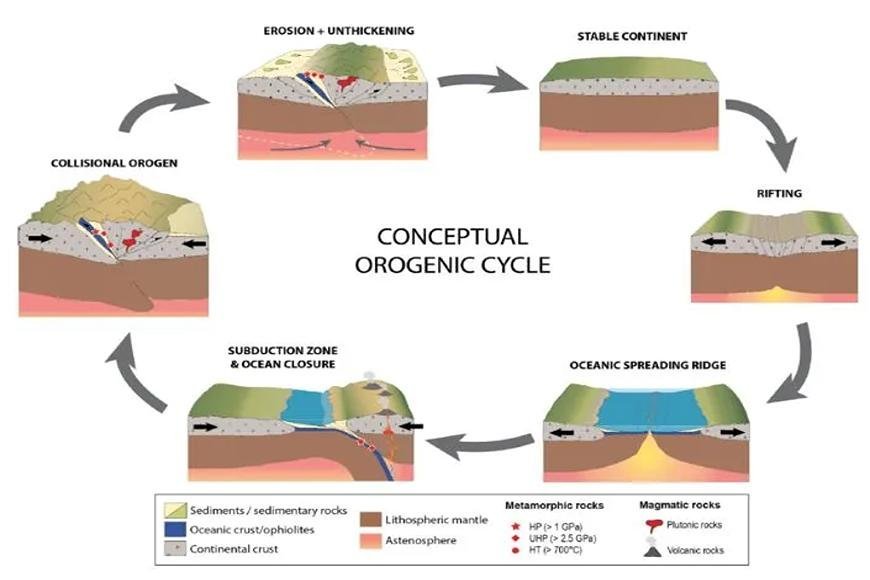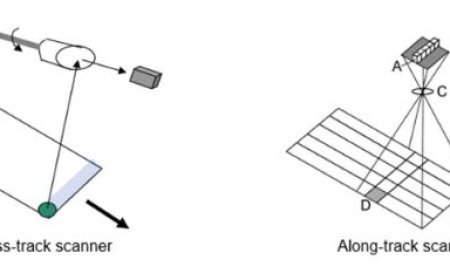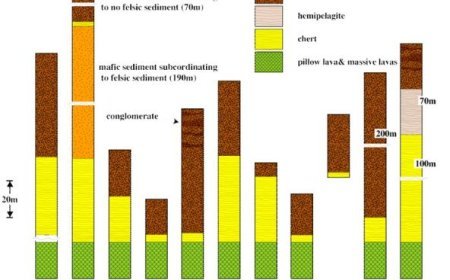OROGENY CYCLE
From Seafloor to Summit: Witness the orogeny cycle - oceans vanish, mountains emerge, shaping Earth's dramatic landscapes.

Orogeny Cycle
- Imagine the Earth's crust breaking and rising like a massive sheet of paper, eventually generating spectacular mountain ranges that break the sky.
- This amazing phenomenon is known as orogeny, and it is the driving force behind the formation of many of the world's most beautiful landscapes.
- This stunning process is known as orogeny, and it is the driving force behind the formation of many of the Earth's most breathtaking landscapes.
Orogeny Stages
Orogeny is not a simple process; it is a complicated cycle with numerous stages, each of which plays a critical part in sculpting the final mountain range.
1. Convergence and Collision
- The trip begins with the movement of tectonic plates, the Earth's huge jigsaw pieces.
- When plates converge, they push against each other, kicking off the orogeny cycle.
- When continental plates hit each other, the huge force bends the sides like a car bumper when it hits another car head-on.
- In the case of continental plates, the great force forces them to clash, crumpling the edges like a car fender in a head-on collision.
2. Folding and Faulting
- The massive pressure from the collision squeezes the Earth's crust, folding and bending rock layers like sheets of paper.
- These folds can be massive, spanning kilometers and creating the core structure of the mountain range. Also, the huge stress can break the rock into flaws, which are deep cracks that can go for hundreds of kilometers.
- The enormous tension may also lead the rock to shatter, generating faults—deep fissures that can stretch for hundreds of kilometers.
3. Uplift and Erosion
- As the impact proceeds, the crushed rock strata are gradually raised, forcing them upwards and building the earliest mountain range.
- Nature, on the other hand, never sleeps.
- The newly formed mountains begin to erode as a result of wind, rain, and glaciers, shaping them into the familiar patterns we see today.
- Valleys are cut, peaks become sharper, and the mountain range takes on its final shape.
4. Divergence and Stabilization
- The tectonic plates finally stop pressing against one another, beginning a phase of divergence.
- As they move apart, the forces that raised the mountains lessen, allowing for more erosion and sculpting.
- Over millions of years, the mountains stabilized and became part of the permanent topography of the Earth.
What's Your Reaction?



































